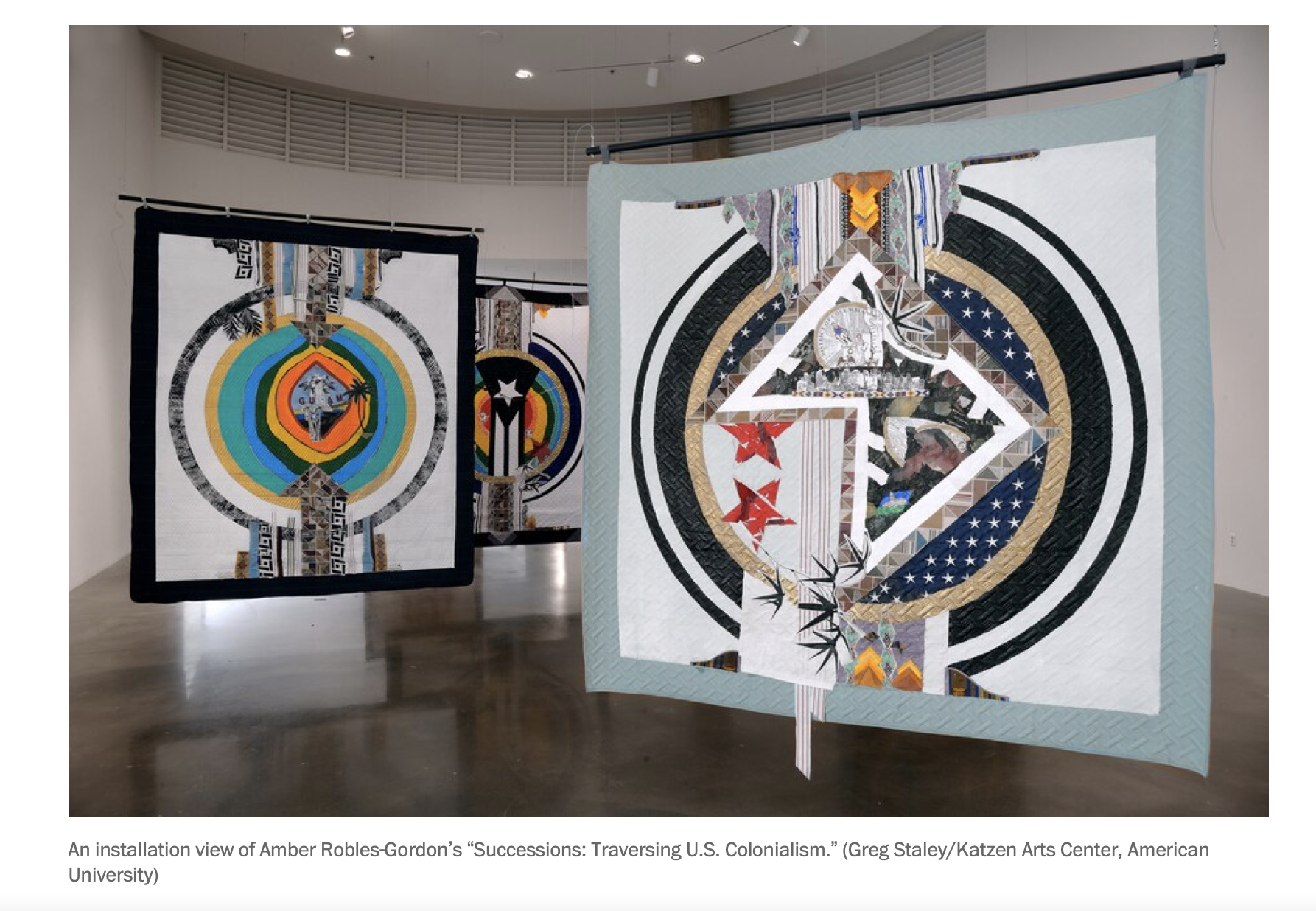The Washington Post
Residents of D.C. are used to seeing the place as an almost-state, much like Maryland or Wyoming, yet not quite. Amber Robles-Gordon, a longtime Washingtonian who was born in Puerto Rico, has a different take. Her American University Museum show, “Successions: Traversing U.S. Colonialism,” groups D.C. with her birthplace and four other inhabited territories: Guam, the U.S. Virgin Islands, American Samoa and the Northern Mariana Islands. She represents these disenfranchised territories on two-sided quilted banners, one face for “political” and the other for “spiritual.”
Robles-Gordon has often shown fabric pieces in which a variety of found materials dangle in free-form compositions. The “Successions” banners are more tightly arranged, although still in improvisational patchwork. The political face of the D.C. quilt depicts the city’s diamond shape, minus the chunk that was retroceded to Virginia, and two sets of stars, echoing both the U.S. and D.C. flags. The flip side features motifs that evoke the Indigenous people who were displaced when the area became the capital of a country whose possessions would stretch from the Caribbean to the Pacific. Similar contrasts between official and ancestral are expressed on the alternate sides of the other quilts.
The show also features “Place of Breath and Birth,” collages on canvas that incorporate photos, including one of Robles-Gordon. These pieces are horizontal, and thus feel more like landscapes, albeit ones that are kaleidoscopic rather than realistic. They’re titled in Spanish and English, reflecting the artist’s Afro-Latina heritage. The artfully arranged scraps are analogous to what her statement calls “the missing slivers of my cultural identity,” and remind the viewer that Robles-Gordon’s exploration of U.S. territories began as a quest to learn more about herself.
Like Robles-Gordon, Anil Revri begins with the decorative arts, only to transcend them. The Indian-born D.C. artist’s “Into the Light,” also at the university’s museum, consists of hard-edge symmetrical abstractions that invoke multiple Eastern spiritual traditions. His lustrous mixed-media pictures are executed mostly in black, white and metallic tones, sometimes with red touches. They’re partly inspired by yantras, Hindu sacred patterns whose earlier known examples are more than 20,000 years old. Revri also takes cues from Western sources.
Most of the works in this show are in the “Geometric Abstraction” series and were made in 2019-2020. Their sturdy frameworks suggest architecture, but they’re executed on handmade paper whose ragged edges and rough textures hint at fabric; it’s as if the pictures are both temples and the prayer rugs within them. A few earlier pieces, notably 2011’s “Ram Darwaza II,” include softer, cloudlike forms. But all the artist’s renderings can be read as symbolic maps of an orderly universe.
Amber Robles-Gordon: Successions: Traversing U.S. Colonialism and Anil Revri: Into the Light Through Dec. 12 at the American University Museum at the Katzen Arts Center, 4400 Massachusetts Ave. NW.
